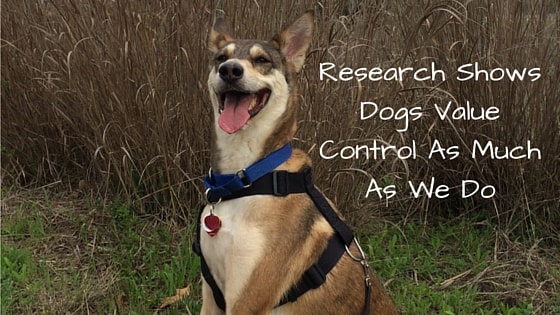One of the myths of force-free dog training is that the dogs are simply working for food, and once the food is gone, the obedience will be gone. You, as modern dog trainers, know that is far from the truth. However, here’s a study that was done that also disputes that myth.

“Do Dogs Get That Eureka! Feeling?”
This study, done in Sweden, took 6 matched pairs of Beagles. The Beagles alternated between the experimental group and the control group. Six pieces of equipment were present. Three of the pairs would manipulate the pieces of equipment and the other pairs would manipulate the other equipment. The room the experiment took place in had a runway with a gate that led to the reward (either food or human attention). During the experimental group, the gate would be opened once the dog had successfully manipulated their equipment. During the control group, the gate would open after the same amount of time the dog in the experimental group took, regardless of what actions the control dog was exhibiting, and the same reward would be given.
What they found was that the experimental dogs were incredibly eager to get into the room, while the control dogs started eager but lost interest after two or three times and the experimenter had to start coaxing them into the room. They were less eager while in the test room and would sometimes bite or chew on the equipment, which none of the experimental dogs had done. When the runway gate was opened, the control dogs were much faster to leave the room to pursue their reward.
Regarding rewards, when the reward was food or time with another dog, the control dogs left the arena more quickly than the experimental dogs. However, when the reward was human petting, both groups of dogs left at the same rate. Both sets of dogs were more active though when the reward was food.
Conclusions From This Research
So what does this study teach us? Well, a couple of possibilities. First, the experimental dogs were in control over their environment. The gate to the runway opened after they successfully manipulated their equipment. Secondly, they were problem-solving. They were getting mental stimulation. The control dogs had no control over their environment and they got a reward no matter what they did. Lack of control over one’s environment is stressful. All animals, including humans, thrive when they have control over their environment.
The researchers said, ““The experimental animals in our study were excited not only by the expectation of a reward, but also about realizing that they themselves could control their access to the reward. These results support the idea that opportunities to solve problems, make decisions, and exercise cognitive skills are important to an animal’s emotional experiences and ultimately, its welfare.”
So, as modern dog trainers, how can you use this to your benefit?
- Encourage your clients to use enrichment toys with their dogs.
- Play nosework games.
- Give the dog the opportunity to EARN treats, not just receive them.
- Most importantly, give the dog some control. If you can tell the dog is uncomfortable in its environment, remove it. Follow the dog’s lead. Encourage your clients to take meandering walks where the dog gets to choose the direction they go and when they are going to stop and sniff.
What other things can you think of that allows dogs to have some control and problem solve?
Get Dog Training Business Tips!
Receive valuable dog training business tips and resources every week! Subscribe to The Modern Dog Trainer now by submitting your name and email below.
[mc4wp_form]



